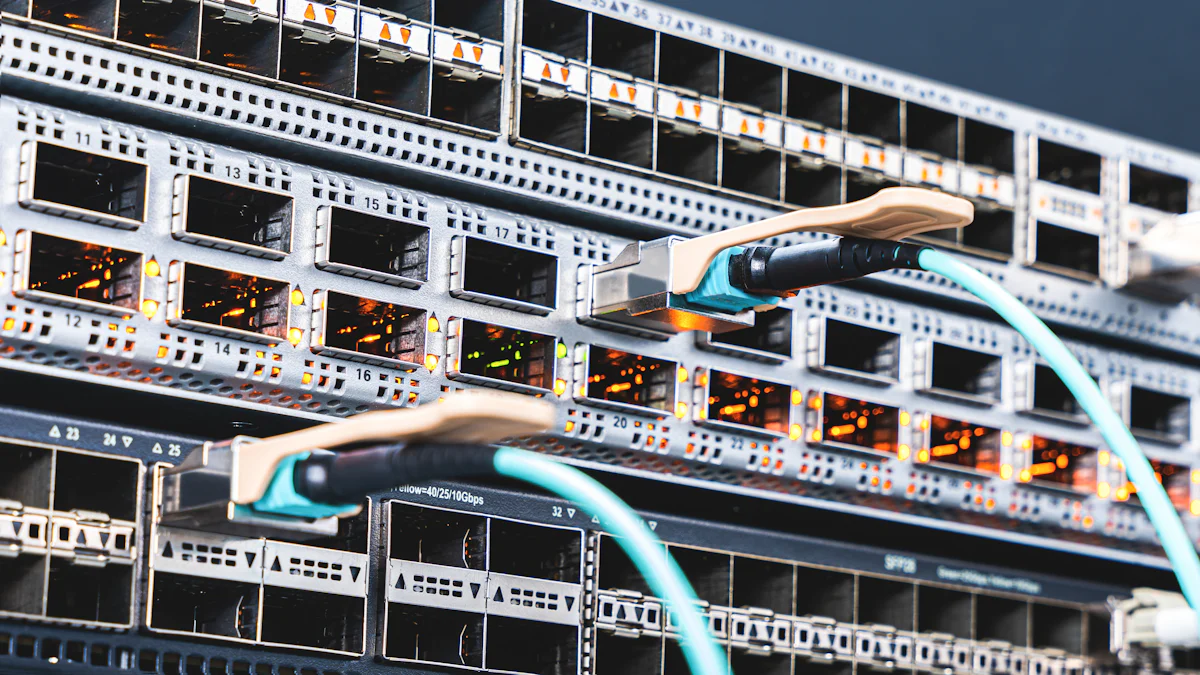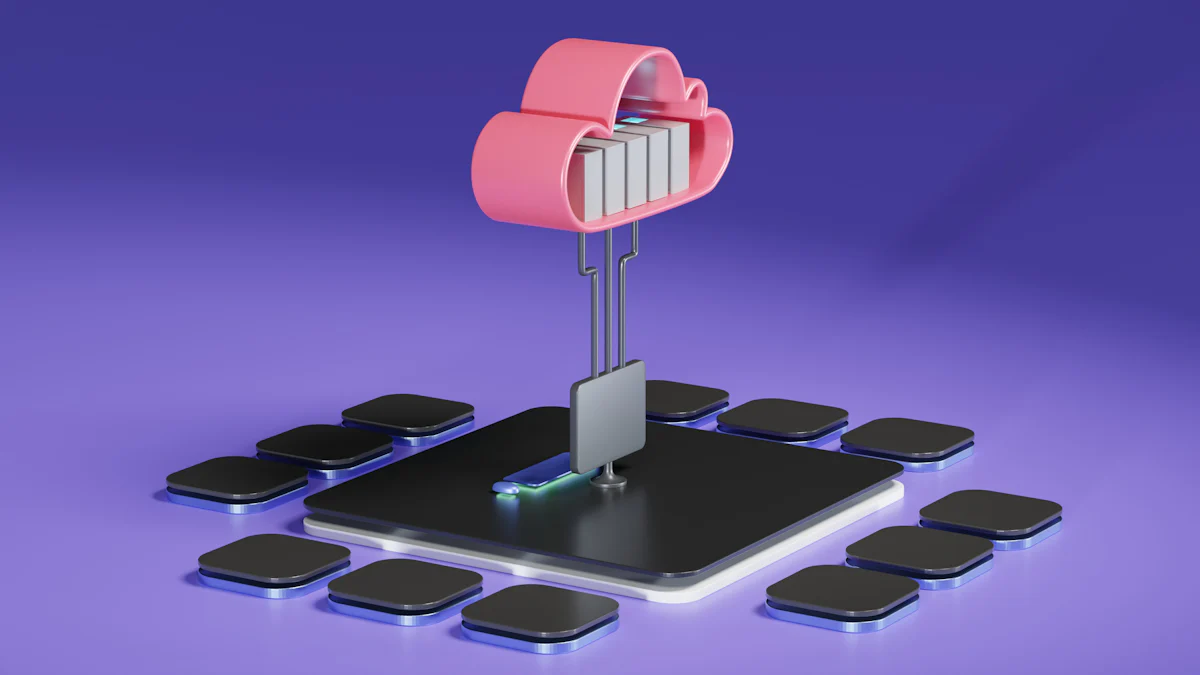


Grid Computing represents a powerful framework that meets the growing computational demands of today. This system links multiple computers, often dispersed across various locations, to work together on complex tasks. Grid Computing overcomes the limitations of traditional shared computing models. This approach has become a principal trend in distributed computing systems. The significance of Grid Computing in modern computing lies in its ability to harness unused resources efficiently. This capability makes it an essential tool for scientific research and enterprise solutions.
Understanding Grid Computing
Definition and Concept of Grid Computing
What is Grid Computing?
Grid Computing represents a method that combines computer resources from various locations to achieve shared goals. This system links different computers, often dispersed geographically, to solve complex problems. The approach allows for the modeling, simulation, and analysis of intricate applications. Grid Computing provides a framework where multiple computers work together as a unified resource.
Key Characteristics
Grid Computing exhibits several key characteristics. The system involves heterogeneous resources, meaning computers with different specifications can participate. The geographical distribution of these resources enables extensive collaboration. The infrastructure supports the pooling of unused resources, making them available for demanding tasks. Grid Computing also emphasizes scalability, allowing the addition of more resources as needed.
How Grid Computing Works
Role of the Control Node
The control node plays a vital role in Grid Computing. This computer acts as the central point that manages task assignments. The control node monitors the availability of resources and ensures efficient task distribution. The system relies on the control node to maintain coordination among participating computers.
Task Distribution Process
The task distribution process in Grid Computing involves several steps. The control node first identifies available resources across the network. The system then breaks down complex tasks into smaller units. Each unit gets assigned to a specific computer based on its capacity. The computers execute their assigned tasks and return results to the control node. The control node compiles the results to complete the overall task.
Infrastructure and Architecture of Grid Computing

Grid Computing relies on a robust infrastructure and architecture. Understanding these components helps you grasp how Grid Computing functions effectively.
Components of Grid Computing
Geographically Dispersed Computers
Grid Computing uses computers located in different places. These computers connect through networks to share resources. Each computer contributes its processing power to the grid. This setup allows Grid Computing to handle large tasks efficiently. You can think of it as a team of computers working together from various locations.
Resource Pooling
Resource pooling stands as a key feature of Grid Computing. The system combines unused resources from multiple computers. This pooling creates a powerful computing environment. You gain access to vast computational power without needing a single supercomputer. Grid Computing makes this possible by utilizing available resources efficiently.
Architecture Overview of Grid Computing
Network Configuration
Network configuration plays a crucial role in Grid Computing. Computers in the grid connect through high-speed networks. This connection ensures fast data transfer between nodes. Proper network setup enhances the performance of Grid Computing. You benefit from seamless communication among distributed computers.
Security Considerations
Security remains vital in Grid Computing. The system must protect data and resources from unauthorized access. Security measures include encryption and authentication protocols. These measures safeguard information within the grid. You can trust Grid Computing to maintain data integrity and confidentiality.
Applications of Grid Computing

Grid Computing plays a vital role in various fields. The ability to pool resources and solve complex problems makes Grid Computing indispensable. This section explores real-world examples and industry applications.
Real-World Examples of Grid Computing
Worldwide LHC Computing Grid
The Worldwide LHC Computing Grid (WLCG) stands as a prominent example of Grid Computing. The Large Hadron Collider requires immense computational power. WLCG provides global resources for data storage and analysis. Scientists use this grid to collaborate and share findings. The grid supports groundbreaking research in particle physics.
Other Notable Projects
Several other projects utilize Grid Computing effectively. The SETI@home project analyzes radio signals for extraterrestrial life. Researchers use Grid Computing to process vast amounts of data. The Folding@home project studies protein folding to understand diseases. These projects highlight the versatility of Grid Computing.
Industry Applications of Grid Computing
Scientific Research
Grid Computing revolutionizes scientific research. Researchers handle large datasets with ease. The system enables collaboration among scientists worldwide. Grid Computing accelerates discoveries in fields like genomics and climate modeling. The ability to simulate complex scenarios benefits researchers greatly.
Business and Enterprise
Businesses leverage Grid Computing for various purposes. Companies analyze large volumes of data efficiently. The system improves decision-making processes. Enterprises use Grid Computing for financial modeling and risk assessment. The scalability of Grid Computing supports growing business needs. Organizations achieve cost savings by utilizing existing resources.
Grid Computing vs. Cloud Computing
Grid Computing and Cloud Computing both offer powerful solutions for handling large-scale computational tasks. However, these two approaches differ significantly in terms of resource management and cost efficiency. Understanding these differences helps you decide which system best suits your needs.
Key Differences
Resource Management
Grid Computing involves combining computer resources from multiple administrative domains. This method allows computers from various locations to work together on a single task. Each computer contributes its processing power to the grid. The control node manages the distribution of tasks across the network. This setup enables efficient use of unused resources.
Cloud Computing relies on sharing computing resources rather than using local servers or personal devices. Cloud providers manage resources centrally. Users access these resources over the internet. This approach offers flexibility and scalability. Users can easily increase or decrease their resource usage based on demand.
Cost and Efficiency
Grid Computing provides a cost-effective solution by utilizing existing resources. Organizations do not need to invest in expensive hardware. The system pools unused resources, creating a virtual supercomputer. This method reduces costs while maintaining high efficiency.
Cloud Computing offers a pay-as-you-go model. Users pay only for the resources they use. This model provides cost savings for businesses with fluctuating demands. Cloud providers handle maintenance and upgrades. This reduces operational costs for users.
Use Cases
When to Use Grid Computing
Grid Computing excels in scenarios requiring collaboration among geographically dispersed teams. Scientific research projects benefit from this approach. Researchers can pool resources from different institutions. This method supports large-scale data analysis and simulations. Grid Computing is ideal for projects with specific resource requirements.
When to Use Cloud Computing
Cloud Computing suits businesses needing flexibility and scalability. Companies with variable workloads benefit from cloud services. The cloud supports applications with unpredictable traffic patterns. Businesses can quickly scale resources up or down. Cloud Computing provides a reliable solution for hosting websites and applications.
Advantages and Challenges of Grid Computing
Grid Computing presents both benefits and challenges. Understanding these aspects helps you make informed decisions about using Grid Computing for your needs.
Benefits of Grid Computing
Scalability
Grid Computing offers remarkable scalability. You can add more computers to the grid as needed. This flexibility allows you to handle increasing workloads without significant investment. Grid Computing provides a solution for growing computational demands. The system adapts to changing needs efficiently.
Cost-Effectiveness
Grid Computing proves cost-effective for organizations. You utilize existing resources instead of purchasing new hardware. The pooling of unused resources creates a powerful computing environment. This approach reduces expenses while maintaining high performance. Grid Computing enables you to achieve more with less financial burden.
Potential Challenges
Complexity
Grid Computing involves complex systems. Managing multiple computers across different locations presents challenges. You need expertise to set up and maintain the grid. The task distribution process requires careful coordination. Grid Computing demands a thorough understanding of its infrastructure.
Security Concerns
Security remains a concern in Grid Computing. Protecting data from unauthorized access is crucial. You must implement strong encryption and authentication measures. Grid Computing systems require regular security updates. Ensuring data integrity and confidentiality is essential for trust in Grid Computing.
Grid Computing stands as a transformative force in modern computing. This framework efficiently harnesses unused resources to solve complex tasks. Grid Computing supports scientific research and enterprise solutions. The future potential of Grid Computing remains vast. Emerging technologies will benefit from this distributed system. You should explore Grid Computing further. Understanding its capabilities can lead to innovative applications.
FAQ
Grid Computing combines computer resources from different locations to achieve a common goal. The system connects multiple computers to work on complex tasks. Grid Computing provides a framework where computers collaborate as a unified resource.
Grid Computing uses a decentralized management system. Computers in Grid Computing contribute their processing power to the grid. Cloud Computing relies on centralized management. Users access resources over the internet. Grid Computing focuses on pooling unused resources. Cloud Computing offers flexibility and scalability.
Grid Computing consists of geographically dispersed computers. These computers connect through networks to share resources. The control node manages task assignments. Resource pooling creates a powerful computing environment. Grid Computing emphasizes scalability and collaboration.
Grid Computing offers scalability. You can add more computers to handle increasing workloads. The system proves cost-effective. Organizations utilize existing resources instead of buying new hardware. Grid Computing supports large-scale data analysis and simulations.
Grid Computing involves complexity. Managing multiple computers across locations presents challenges. Security remains a concern. Protecting data from unauthorized access is crucial. Grid Computing systems require regular updates for security.
Grid Computing revolutionizes scientific research. Researchers handle large datasets with ease. The system enables collaboration among scientists worldwide. Grid Computing accelerates discoveries in fields like genomics and climate modeling. The ability to simulate complex scenarios benefits researchers greatly.
Businesses leverage Grid Computing for data analysis. Companies improve decision-making processes. Enterprises use Grid Computing for financial modeling. The scalability of Grid Computing supports growing business needs. Organizations achieve cost savings by utilizing existing resources.
Continue Reading About Grid Computing
10 Game-Changing Project Management Reporting Types!
Unlock project success with 10 must-know reporting types! Track progress, manage risks, and stay on budget like a pro.
Lewis
Mar 03, 2025
15 Best Software Reporting Tools for 2025
Explore the top 15 software reporting tools for 2025. Compare features, pricing, and usability to find the best fit for your business needs.
Lewis
Oct 08, 2024
2025 Data Pipeline Examples: Learn & Master with Ease!
Unlock 2025’s Data Pipeline Examples! Discover how they automate data flow, boost quality, and deliver real-time insights for smarter business decisions.
Howard
Feb 24, 2025
Which Data Analysis Projects Work Best for Beginners?
Ready to shine in 2025? Discover easy data analysis projects to boost your portfolio, learn data cleaning, visualization, and tackle real-world challenges!
Lewis
Mar 10, 2025
Customer Data Integration: A Comprehensive Guide
Master customer data integration to enhance business operations by combining data from multiple sources for a comprehensive customer view.
Howard
Sep 07, 2024
Draft Dashboard Review - Is It the Ultimate DFS Tool?
Review the Draft Dashboard, a top DFS tool with real-time data, predictive analytics, and lineup optimization. Compare features and pricing with competitors.
Lewis
Oct 21, 2024


